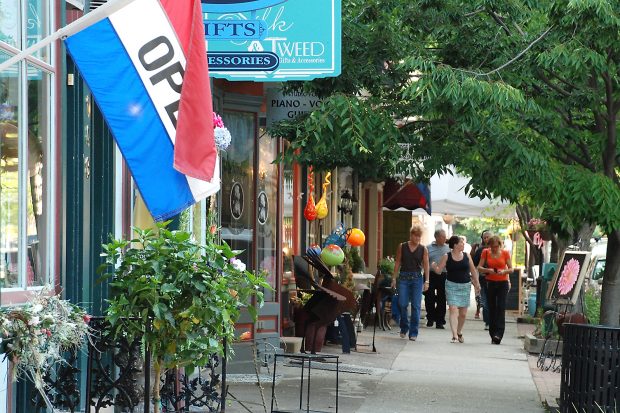New Jersey Future Blog
How to Strengthen a COVID-19 Small Business Program
May 26th, 2020 by Peter Kasabach
On Friday, the New Jersey Economic Development Authority (NJEDA) announced expansion of its small business COVID-19 grant program. As a member of the Main Street Subcommittee of Governor Murphy’s Restart and Recovery Advisory Council, New Jersey Future released the following statement supporting this expansion, and further encouraging direct support to those businesses that are vital to our downtowns’ survival:
“Our downtown and main street businesses are trying their best to weather this storm and get ready to re-open. During this time of uncertainty, cashflow subsidies are critical to ensure that they can rebound and stay a vital part of our downtown and main street fabric. The EDA’s announcement will provide much needed support, and we hope these funds will find their way to the small businesses owners that have not been able to access these resources previously, either because they lack the experience, ability, or knowledge to do so.”
This expanded program will need to address the unique barriers that are faced by small businesses in lower-income places, and those run by people of color. The set-aside within the program for businesses in Opportunity Zones is a welcome start. New Jersey had done a good job geographically selecting the Opportunity Zones based on a combination of distress and market viability factors. Ensuring that viable small businesses located in Opportunity Zones can remain viable into the future will be the next test.
New Jersey Future, along with our partners, has spent many years working with downtown leaders to understand how to create vibrant, walkable, equitable downtowns and have provided resources, guidance, and direct services to many of these places. With this experience, we have made several recommendations to improve the impact of the small business program:
 Immediately address viable small business cash flow needs. The federal and state governments have provided direct cash support, but it is not enough, and it isn’t reaching the places where it will have the greatest impact. Many of these business owners do not know about the programs or do not have the confidence, expertise or time to apply to a state program. The State can set aside some of its small business funds to support local matching funds that would be administered by local Business Improvement Districts (BID) and economic development entities. For example, a BID would establish a fund at $50,000 and the State would provide a three-to-one match bringing the total local fund up to $200,000. This process would ensure that the local entities can target key populations and get the money where it will generate the greatest benefit in the shortest period of time with additional local leverage.
Immediately address viable small business cash flow needs. The federal and state governments have provided direct cash support, but it is not enough, and it isn’t reaching the places where it will have the greatest impact. Many of these business owners do not know about the programs or do not have the confidence, expertise or time to apply to a state program. The State can set aside some of its small business funds to support local matching funds that would be administered by local Business Improvement Districts (BID) and economic development entities. For example, a BID would establish a fund at $50,000 and the State would provide a three-to-one match bringing the total local fund up to $200,000. This process would ensure that the local entities can target key populations and get the money where it will generate the greatest benefit in the shortest period of time with additional local leverage.
Provide assistance with online sales. The majority of small businesses are not equipped to promote or manage online sales. This is both a short-term and longer-term issue. The State can take a proactive approach to developing guidance and direct support to help small businesses transition to manage online sales.
Help small businesses let consumers know they are open. Provide direct support to local agencies that are already trying to do this work, but lack the resources or access to capacity to do it consistently and well. Develop a statewide platform that can be locally implemented. The platform would compile listings of businesses that are still in operation and provide a platform to allow them to promote and advertise their businesses. It could include the utilization of social media to grow awareness among local consumers of the services that are available within their area.
Conduct statewide surveys to gain valuable and timely information. The first survey would be of small businesses to measure the extent of the economic damage and uncover potential for economic growth and viability. Different from other recent surveys, this one would help understand the specific type of business (size, age, etc.), extent of financial impact (triage), how the businesses market to customers, online marketing presence, advertising vehicles used, use of social media, customer demographics, and presence of local support (chambers, SIDs, etc.). The second survey would be a consumer survey to uncover the shifts in consumer desires and find opportunity to grow small businesses.
Repurpose existing funds to support the above. Shift the short-term focus of ancillary funding programs to support targeted economic development and the preservation of existing, viable businesses. For example, the following could be repurposed: UEZ, CDBG, Main Street program.
These suggestions focus on the restart of our downtown economies. Over the coming weeks and months, we look forward to working with the State, partners and other stakeholders on longer-term thinking and ideas that will position New Jersey downtowns and main streets for a brighter future through the recovery. We’d like to hear from you. Do you have a story to share, a barrier that needs tearing down or an idea to move forward? Please contact us. (pkasabach njfuture
njfuture org)
org)
Related Posts
Tags: Downtown, downtowns, small businesses
















